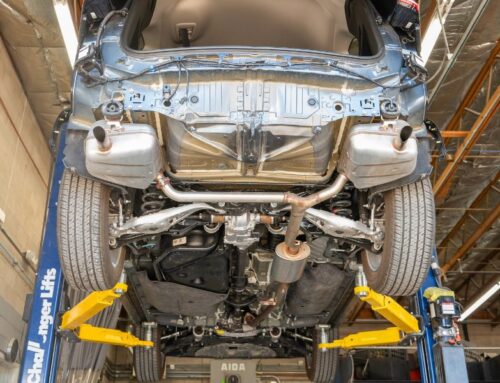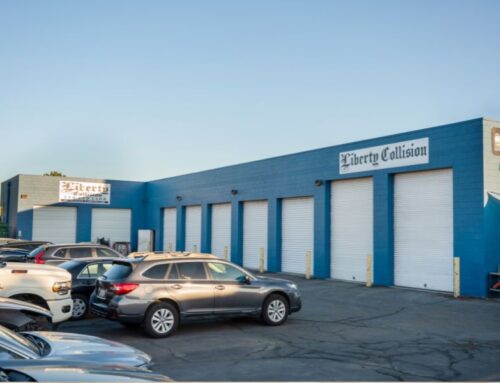
Maintaining your car is a necessary part of keeping it running well for years to come. But keeping up with maintenance tasks can feel overwhelming. Though changing your oil every 5,000 miles can seem like just another item on your to-do list, spending the time on these tasks to keep major repairs at bay is completely worth it. In this blog post, we will discuss 10 car maintenance tips that will help you keep your car in good shape and help save you money!
1. Change Your Oil On Time
Make sure you change your oil every 5,000 miles or follow what is recommended by your car manufacturer.
Your oil affects many of your car’s functions. You’ll thank yourself for completing routine oil changes instead of risking wearing out your engine, which can cost you thousands!
2. Get your tires rotated.
Rotate your tires every 3,000 to 5,000 miles!
Because all four tires on your car won’t wear the same, rotating them regularly can easily extend the life of your tires, saving you the cost of having to replace them prematurely.
3. Replace Your Brake Pads
Remember to check the brake fluid every time you get your oil changed to make sure it’s not dark in color. If the fluid appears dark, you will want to have your brake systems checked more thoroughly.
In between oil changes, check your brake fluid if you notice your car’s brakes feel differently or if you hear squeaking when you hit the brake pedal. Not only could checking this regularly help maintain your car, it can help keep you and others safe on the road.
4. Replace The Air Filter
Change your air filter every 12 months or 12,000 miles.
The function of your car’s air filter keeps pollutants from coming in through the vents. When you drive with a filter that isn’t functioning properly, your engine won’t have the proper air flow necessary to run optimally. Additionally, using an old air filter long past its life can lead to major problems for your air conditioning system. Both can lead to costly repairs in the future, save yourself some serious cash and purchase a new air filter instead.
5. Check Your Coolant
Check your coolant twice a year. Once in the Spring and once in the Fall.
If you don’t stay on top of changing your coolant, you run the risk of serious corrosion inside your car. The coolant affects everything from the heater and air conditioner to the radiator and water pump. For something that impacts that much of your car’s overall health, you don’t want to skip the maintenance on this one.
6. Don’t Skip The Emissions Inspection
Nevada registered vehicles must pass a yearly emissions inspection.
When you keep up with regular maintenance, you shouldn’t have to worry about whether or not your car passed the emissions check. If your car doesn’t pass the test, the emissions facility will tell you what failed and what needs to be fixed in order to fully pass the inspection.
7. Don’t Forget To Replace Your Windshield Wipers
Nevada residents should check their windshield wipers in early fall, before winter weather starts to hit.
Trust us, you won’t want to find out your windshield wipers don’t actually clear your windshield as you are driving through the first storm of the year.
8. Keep Your Car’s Battery Clean
Test your car’s battery twice per year and check for corrosion.
Corrosion (which looks like white or bluish powder) can form on the terminals of your battery. If you don’t keep them clean, the battery could develop a crack or not function properly, leaving you stranded. Making sure your battery is in good shape is worth the 10 minutes it takes to check it before you hit the road!
9. Check your spark plugs.
Though less frequent than other types of maintenance, make sure you have your spark plugs checked every 30,000 miles.
Generally one of the first parts a mechanic checks on your car when you are experiencing engine issues are the spark plugs. They play an important function in many major engine functions, and ensuring they are working properly and in good shape can keep your engine running well for years to come
10. Inspect your belts and hoses.
Generally you’ll want to replace your timing belt every 60,000 miles and your serpentine belt every 40,000 miles. It’s recommended that you change your hoses every four years or whenever one is showing signs of wear.
By giving your belts and hoses a once-over, you can save on major repairs down the road. Worn-down belts can cause other damage to essential components of your car. For example, a weak radiator hose could break, causing your engine to overheat and not run at all. That’s bad news!
Let us help keep your car working properly!
At Liberty Collision, we want to keep your car running its best for years to come. Whether you are in an accident and need repairs, or are looking for regular maintenance, call the professional mechanics at Liberty Collision in Sparks, NV!



